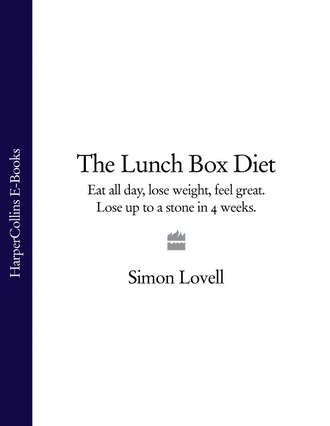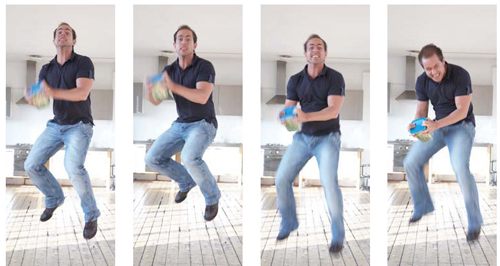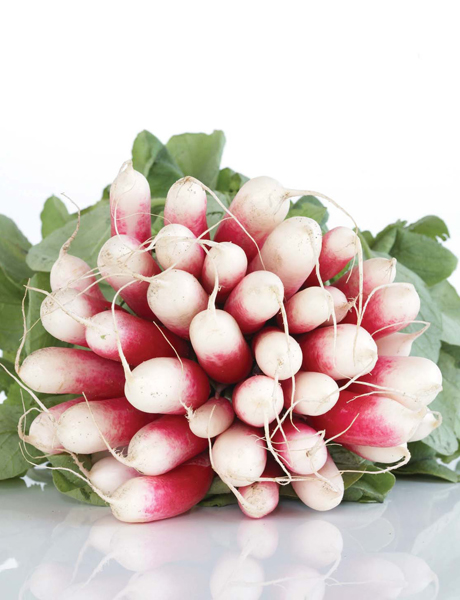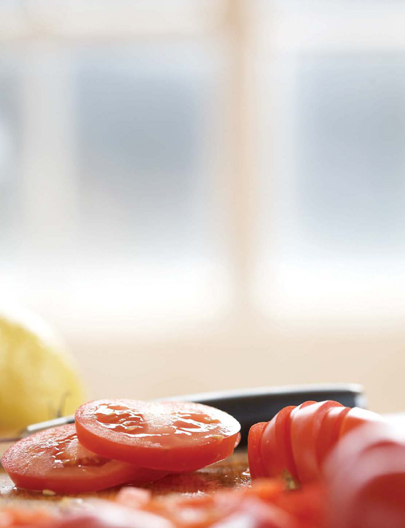
Полная версия
The Lunch Box Diet: Eat all day, lose weight, feel great. Lose up to a stone in 4 weeks.
Group D: Active Carbs
Extra 0-30%
Depending on the kind of lifestyle you lead, you may require a little more energy in your box to keep you going. If you sit in an office most of the day, I’d like you to stick with the standard box with groups A, B and C, and see how your energy levels compare to normal. Chances are if you’re used to eating three times a day you will notice a significant improvement as your blood sugar levels stabilise. You’ll be surprised how much energy you get just by picking at your box.
I never want you to lack energy, so if you feel sluggish, add in one active carb from the list below and see how you perform. Bear in mind that there could be other factors affecting your energy level, such as lack of sleep. You should also add an active carb if you suffer from diabetes.

If you are taking an exercise class or going to the gym, leave around an hour and a half for your food to digest beforehand. Take your box with you so you can replenish your energy directly after your session instead of grabbing unhealthy snacks. Alternatively, a banana is a good post-gym snack.

Let’s just recap the box contents
Group A: Vegetables – Grab a selection of five and throw them into your box.
Group B: Protein – Choose one protein source per box.
Group C: Dressing – Essential to add flavour; a little goes a long way.
Group D: Active carbs – Only add these if you have high activity levels.
The Lunch Box Diet Tremor
You’ve prepared your box for the day and it’s already looking pretty tasty, but how do you get it bursting with flavour? It’s time for a box tremor! Seal your lid, grasp the edges for extra seal protection and perform the 5-second tremor. Go. You’ll be surprised at how much difference this makes to the flavour of your box. Those tomatoes will split, seeping their juices; beetroots will blast their purple flavour around; and those herbs and spices will trickle onto every leaf. Yummy!

Chapter 4 Your Rainbow of Great Flavours
Choosing a great combination of colours and flavours adds aesthetic appeal and provides optimum nutrition
Group A: Vegetables
Eating lots of vegetables is a great way to achieve healthy weight loss because they are low in calories and very versatile. If you grew up on tinned green beans and corn, then you might not be aware of all the different choices.
Raw vs Cooked
When vegetables are raw, they contain all the goodness that Mother Nature intended. On the whole, when we start manipulating them in the kitchen, little by little they lose nutritional value. Have you ever looked at the water in a pan in which you’ve boiled broccoli? It’s green, right? Carrot water is orange. Magic trick? No. What you’re looking at is the phytochemicals that you’ve just boiled out of the vegetable.
Phytochemicals give vegetables their bright beautiful colours and they also provide you with powerful substances called antioxidants. Our bodies are full of little guys called free radicals that are created by environmental factors such as sunlight and pollution and other things that we ingest. They create quite a bit of damage, ageing cells and damaging tissues. Antioxidants have the ability to neutralise free radicals and rid the body of them, thus helping to prevent cellular and tissue damage and protect you from life-threatening diseases such as cancer. Which is a good reason to eat as many as you can.
Another reason to avoid too much unnecessary cooking is that it breaks down the fibre content of vegetables and makes it less effective. Fibre is the indigestible portion of plants that is necessary for a healthy digestive system. It helps move the stomach contents through the digestive system and aids in elimination. In other words, it stops you getting constipated.
Vegetables that need to be cooked can be lightly steamed, microwaved, briefly roasted in a hot oven or grilled. Be careful what you add to them, though. Butter, cheese, dressings and other types of heavy sauce are popular ways of preparing vegetables but try vinegars, pepper sauces, black pepper, onion, shallots or garlic instead to avoid adding fat and calories to such wonderful little packages of nutrition.
Red
Beetroots
Folic Acid
Folic acid (or folate) is extremely important for pregnant women, as it helps prevent the birth defect spina bifida. It is also important for heart health and mental health, as low folate has been linked to depression.
The ‘sweet beet’ is finally gaining the recognition it deserves. Beetroots are packed full of nutrients such as folic acid, vitamin C and potassium and they contain fibre and other antioxidants as well.
Selection: Though we most often think of beetroots as ‘red’ they can actually be orange or white in colour and their size can range from little golf balls to baseballs. When purchased with their greens still attached, make sure the leaves are fresh-looking and not wilted. Without the leaves, beets should be of good colour and heavy, devoid of wrinkly or sprouting skin.
Preparation: They are incredibly versatile in the kitchen and can be prepared in a number of ways. Peel them and cut into chunks then either place them in a quarter cup of water in a microwavable dish and cook on high for around 10 minutes or steam them on the stove until tender. Don’t boil the nutrients out of them the way grandma used to do. Quite excellent served cold, they are perfect for your lunch box! And don’t forget to save their greens and roots – these are edible and full of nutrients. Just wash and toss in your lunch box.
Peppers
Indole
The antioxidant indole has been shown to block the effects of excess oestrogen in the body, which leads some scientists to believe that it may reduce the chances of developing breast cancer. Good levels of indole can be found in the brassica group of vegetables, including broccoli, cabbage, cauliflower and sprouts.
We’ll discuss the spicy, hot guys on page 86, but here I’m talking about bell peppers, which can be red, yellow, orange or green. They add flavour and zest but have very few calories and a lot of antioxidants. (Remember those things we talked about that neutralise free radicals, so are anti-ageing and anti-cancer?) Red peppers contain more than three times as much vitamin C as oranges as well as being a good supply of beta-carotene (which the body converts to vitamin A). In addition, they contain a fair amount of fibre and vitamin B6.
Selection: The colour should be vibrant and rich. Stay away from pale peppers as they are of poorer quality and nutritional value. They should be heavy and firm with no soft spots.
Preparation: Wash, cut a circle around the stem and pull out the core. Rinse the seeds out. With a sharp knife, cut in half and slice into strips then remove the remaining white membrane where the core was attached. Leave in strips or chop them up. Your choice!
Radishes
Radishes are great for flavour, colour and vitamin C as well as an antioxidant called indole (see left). Though we tend to think of ‘red’ radishes, there are other varieties and their flavour changes from the sweet white icicles to the sharp black radish.
Selection: Choose healthy-looking radishes with bright, fresh greens.
Preparation: Chop off the greens before storing and they will last longer in the fridge. When ready to use, simply rinse and chop to desired size.

Rhubarb
Rhubarb’s tart flavour makes it a great addition to your lunch box; however, the traditional method of cooking rhubarb with tons of sugar needs to be modified. Rhubarb offers fibre, potassium and calcium and 100 grams of rhubarb (without sugar) is only 7 calories!
Selection: Rhubarb should be crisp and glossy. The colour can range from pale green or pink all the way to a deep red colour and doesn’t matter when you’re making a selection. The most tender stalks will be less than 3cm thick. Remove any traces of leaves as they contain a corrosive toxin called oxalic acid.
Preparation: Rhubarb is too tart to eat alone but it need not be drenched in sugar. Use sweet berries or sweet cider vinegar in the water when you boil it, with maybe just a teaspoonful of honey to taste.
Tomatoes
Tomatoes are a universal favourite used widely in many different cuisines. They’re full of antioxidants, including the superantioxidant lycopene, which has strong anti-cancer properties and has been shown to reduce the harmful process of oxidation of LDL (‘bad’) cholesterol in the blood. Try heirloom tomatoes if you can find them. They are as varied in flavour as they are in shape and colour. These charismatic guys can be green, yellow, red, orange and even a deep colour that looks almost black. Red and orange are the sweetest and green is tart. Try sunblush and sundried tomatoes as well for a more intense flavour.
Selection: Steer clear of hot-house tomatoes. These pale guys contain up to 50 per cent fewer phytochemicals than they would have had if they’d been grown in the sun and left on the vine to ripen. If a tomato isn’t a gorgeous red, it probably isn’t very good. Choose tomatoes that are firm but not rock hard and let them sit out on the counter in an attractive dish.
They are ripe when they feel supple yet not too soft. Store tomatoes in a cool place on the countertop. You can speed up the ripening process by placing them in a brown paper bag.
Preparation: Tomatoes are wonderful chopped up, used for fresh salsa (see page 214) or roasted, and go wonderfully with nearly any lunch box combination.
Watermelon
A fruit, but worthy of a veggie listing and great in your lunchbox because of its sweet, mouth-watering flavour and its beta-carotene, lycopene and potassium content.
Selection: Watermelon is definitely seasonal and, as a rule of thumb, the less expensive, the better the fruit. Produce that is in abundance is generally the freshest and markets put them on sale because of this reason. Choose seedless varieties for convenience and make sure it is firm and has no soft spots. Look for a lighter-coloured rough patch somewhere that indicates that the fruit has had some ripening time lying on the ground in the field.
Preparation: I like to chop it up and sprinkle it in a ‘salty’ lunch box combination to take the edge off the salt. See the ‘Trim Turkey’ lunch box recipe on page 198.

Orange & Yellow
Carrots
Can’t forget the good old carrot. Full of beta-carotene, this endearing veggie is probably the easiest to snack on. Ever seen a rabbit wearing glasses? Seriously, it’s long been known that the beta-carotene found in carrots is great for eye health. They are an easy way to add orange to your lunch box and should be a staple in your fridge.
Selection: Crisp and fresh-looking is the key, with nice bright orange colouring.
Preparation: Most of us are pretty familiar with carrots, so the only piece of advice I have to add is that the pre-washed organic baby carrots sold in the bag are a nice convenience to have on hand for those rushed mornings.
Конец ознакомительного фрагмента.
Текст предоставлен ООО «ЛитРес».
Прочитайте эту книгу целиком, купив полную легальную версию на ЛитРес.
Безопасно оплатить книгу можно банковской картой Visa, MasterCard, Maestro, со счета мобильного телефона, с платежного терминала, в салоне МТС или Связной, через PayPal, WebMoney, Яндекс.Деньги, QIWI Кошелек, бонусными картами или другим удобным Вам способом.




